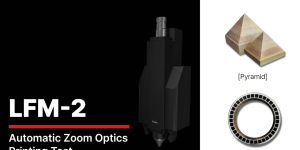
LFM2 - Automatic Zoom Optics Printing Test
InssTek’s LFM-2 Technology Benefits:
- Various beam sizes with automatic lens position adjustment
- Save manufacturing time and adjust the fineness.
• Case 1 (Pyramid):
We printed the pyramid by changing the beam size to SDM 2400, 1600, 1200, and 800.
→ By changing the beam size, rough or smooth structures can be printed.
• Case 2 (Cooling channel):
We printed 2 cooling channels of the same shape using the beam size of SDM 800 / SDM 800 + SDM 1600 respectively.
- Cooling channel with SDM 800: 20hrs 45min
- Cooling channel with SDM 800 + SDM 1600: 14hrs 31min
→ Deposition time was saved about 30%.